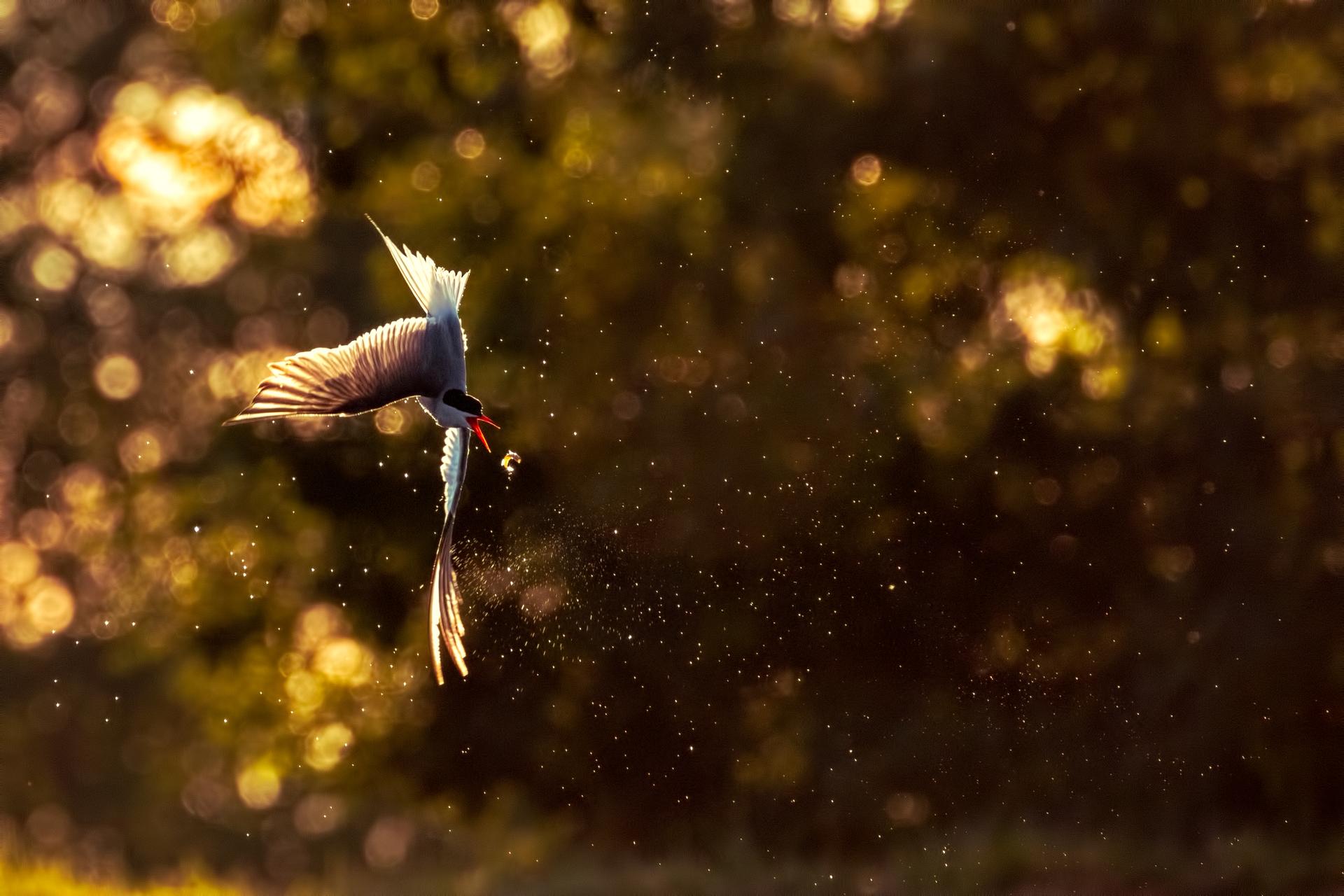
When they arrive they present so many opportunities photography wise for the landlocked wildlife tog. While there are many to be found at coastal regions such as The Farne Islands, our lakes and reservoirs provide some very special and different angles on these birds in a more accessible for all manner.
Finding them is usually not too hard. Most inland waters get a few, some get much larger numbers. While it does provide us with lots of choices, I prefer to choose a waters where you can get down low to the surface, so hides are out of the question. Fortunately this species doesn’t baulk at close quarters interaction with humans.

For the first few weeks after the terns arrival they tend to skim the water’s surface for hatching and struggling insects. Swooping low, they snatch them from the surface with a small splash as their beaks scrape the water. On arrival at any site it is a good idea to stand and watch for a while. Often the wind will have a big influence on where the birds will be feeding. Downwind from trees can be good as insects get invariably blown into the water. There is a good chance of wind shadow leaving the water mirror flat. Not only does this make it easier for the birds to locate their prey, there are some great reflections to be captured. With the wind at your back there is also less chance of getting a shot of the birds’ rear end as they tend to hunt into the wind.

For me, getting really low to the water yields my favourite results. It is not for the feint hearted though as lying face down can be tough on the back and neck. Top tip, if you are at a site with lots of dog walkers, check thoroughly your intended vantage point. Spending those extra few seconds will save the green face grimace when you get when you realise what you have been resting your elbow in. Instead of laying on the bank I have considered donning my wetsuit and shooting from in the water, this would save the back and neck strain as I could shoot from the sitting position. However, as well as funny looks and comments, I am certain it would upset the local twitching community.

After a couple of weeks feeding the terns thin out a little as they begin nesting. It is a good period to take a break from photography as shooting nesting birds is bad form. This is particularly true on many inland waters as it is all too easy to draw the attention of predators such as lesser black backed gulls. If the nests are predated early terns will try again, if it is a week or two later in the season the birds will leave for the year, so it is also in our best interests to give them a fighting chance.

Once the young hatch they grow very quickly and the adults will switch from skimming the water for insects to diving for fry. They will search the margins where the small fish tend to shoal, hovering for a few seconds before zooming into a vertical dive. Hitting the water at speed they will usually be fully submerged before exiting in a plume of water drops and the odd fish. In hovering mode we can grab that classic angel shot, the dive and the splashes as they enter the water and leave with a glimmering snack. To freeze the action a shutter speed of 1/1600th or greater is needed. If they do catch a fish they will either take it to their young, or swallow it. The former they will present it head first to their chicks, the latter the opposite. With spikey fish like stickleback or perch, those spines fold to the rear of the fish making head first consumption essential. To flip the fish the terns will toss and catch them mid-air, a great time to hit the shutter button.

Another spectacular behaviour to look out for is the shimmy. This is the post dive dry off, shaking water in every direction as they rapidly twist and contort their bodies. During these tense few moments you only get a second or less to shoot the magic action. If you hit the shutter too early you have a string of wasted shots before the cameras buffer hits its limit, too late and another chance is blown. The trick is to keep tracking the bird in the viewfinder from the moment it leaves the water, then don’t give up hope. You will begin to spot the signs of a shimmy with practice, little tell tales give the game away. Most often it happens after a failed fishing trip. The bird will gain a little height and slow slightly before a vigorous shake down. If I have the sun behind me for these moments of fun, I tend to shoot wide open in manual with auto ISO engaged. As the sun begins to drop on a summers evening I like to highlight the spraying water with backlighting. It looks wonderful, but it does play havoc with the cameras metering. This is the time I switch to full manual to get the look I want, to make the water look like whiskey. Regular chimping is the key here to make sure your exposure is giving you the results you desire. Light changes a lot in a short time later in the evening. In just a few minutes it can go from over exposed glair full of blown highlights to an inky blackness on your rear screen.

Catching these magic moments is for me all part of the challenge, and the joy, that terns bring. It is what makes me come back to them year after year. One day I will get the shots I want, but hopefully not too soon, and by then I will have thought of some more ideas.































